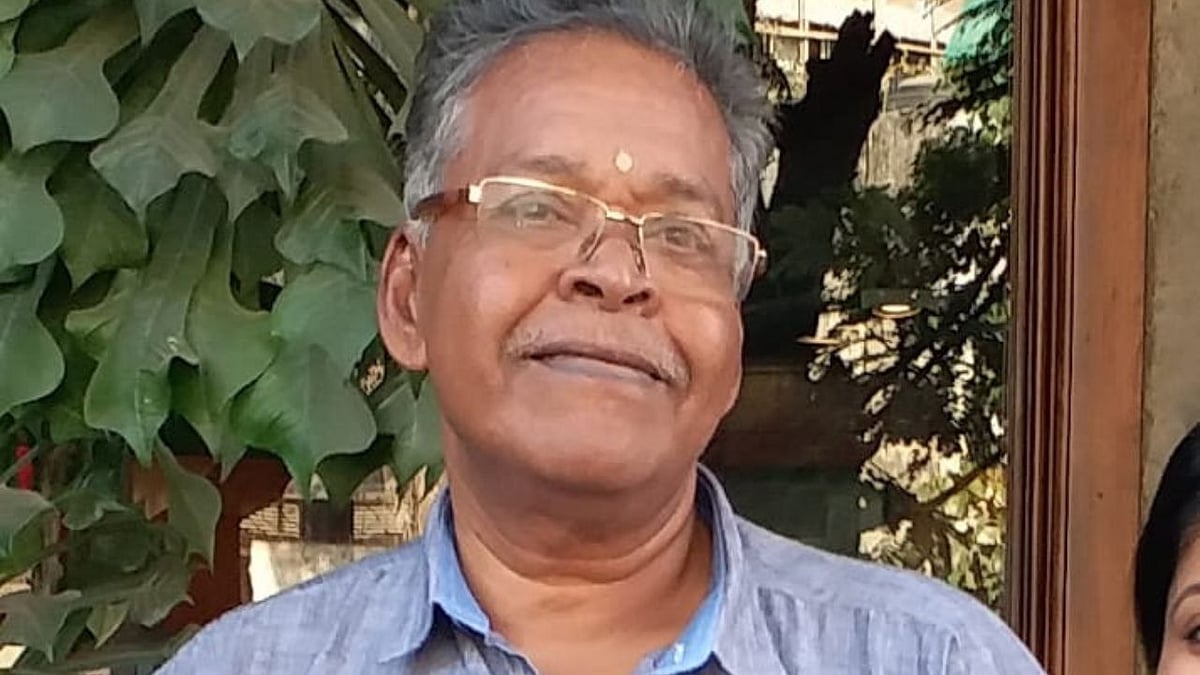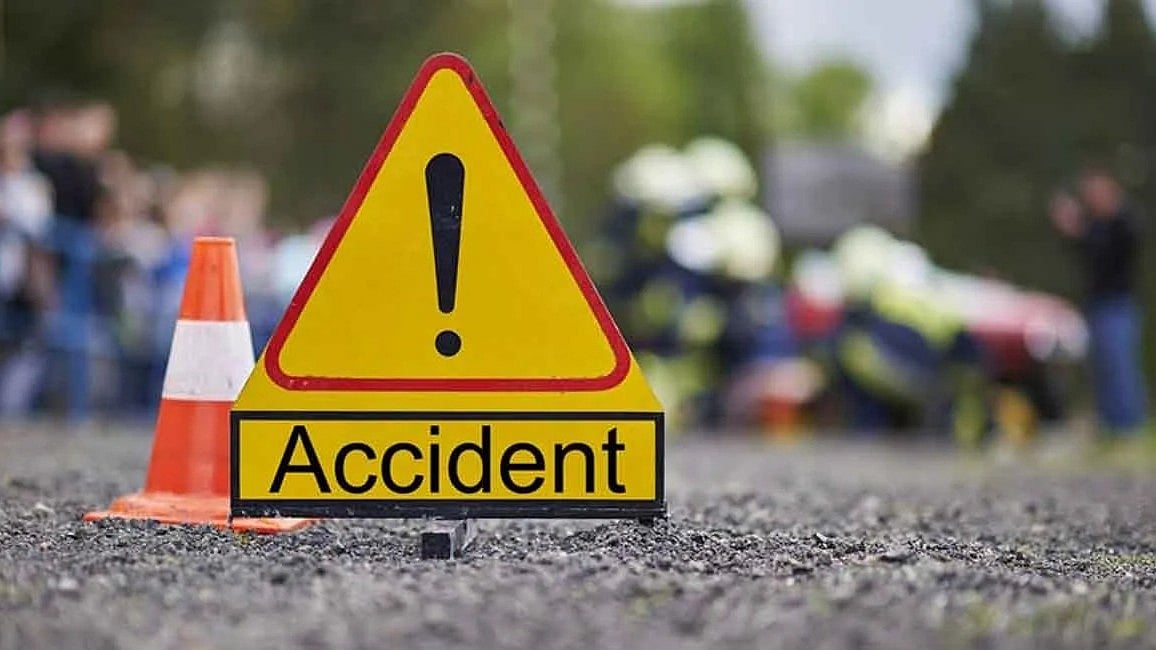MUMBAI: The Great Stink that the 17.9 -kilometre long Mithi river leaves at its mouth near Mahim can make someone nauseous. The other three rivers of Mumbai -- all smaller than Mithi, the Dahisar river, Poisar River, Oshiwara-Walbhat river -- are virtually non-existent or have become just sewage drains.
The situation of Mumbai rivers is akin to the 346-kilometer long River Thames, which flows through the heart of London, which was declared ‘biologically dead’ by the Natural History Museum in 1957. Thames had turned into a dustbin of London as industrial waste, untreated sewage got routed into the river.
Though Mumbai doesn’t have the great industrialisation history that London had, the commercial capital of India has seen migrants move into the city in large numbers and settle besides these rivers to run small-scale industries that discharge waste and untreated sewage into these rivers, making them almost biologically dead.
Stringent laws and a clean-up measure from London authorities saw River Thames get back its life and turn into one of the cleanest rivers, but it took close to six decades of work. The Brihanmumbai Municipal Corporation (BMC), one of the richest municipal corporations in the country, also has a river rejuvenation plan, but only on paper.
The BMC plans to rejuvenate and beautify the four rivers of Mumbai-- Mithi River Dahisar River, Poisar River, Oshiwara-Walbhat river and develope them into tourist attractions. But expert’s question if BMC’s plan is really river rejuvenation.0 Himanshu Thakkar, Environmental activist and water expert and coordinator of South Asia Network on Dams, Rivers and People (SANDRP)-- an informal network of organizations and individuals working on issues related to the water sector-- has said that neither the BMC nor the state government seems to be serious about river rejuvenation.
"They first need to clarify their ideas on river rejuvenation. Secondly, the rivers in Mumbai have been channelised by constructing concrete walls, they have now become drainage channels. However, they cannot even function as drainage channels, with sewer and garbage. In the name of rejuvenation, the civic body has snapped all the connections of the rivers. There is no system to report the health of the rivers," Thakkar said.
According to Thakkar it is not enough to have technology and investment as boasted by the Mumbai civic body to rejuvenate the rivers but there is a need for serious efforts, accountability, and transparency. "There is a need for sewage treatment plants (STPs) with sufficient capacity. Again, the problem is most cities in India have STPs with sufficient capacity, however, many them are not functioning as required or violate the effluent discharge norms. It is high time that the Mumbai civic body understands the right way to carry out the rejuvenation. It is not enough to just commission and upgrade STPs, they need to have a process to ensure that these STPs are functioning as required."
Thakkar suggests that the Mumbai civic body should upload the statistics of the functioning of the STPs on its website daily along with the names of people in charge.

Map of Mumbai's rivers |
Consequences of poor sewage management in the city and how it is affecting the water bodies
With this alarming situation of waterbodies in the financial capital, the BMC needs to rush with its rejuvenation project and upgrade the STPs as soon as possible, say environmentalists. However, the BMC on the other hand has estimated the upgradation of the six STPs will not be completed anytime before 2026 to 2027.
But the issue with effluent discharge and poor sewage management has an adverse impact on marine biodiversity and ecology. At places where dilution is not good, particularly in creeks at Malad and Thane, whatever biodiversity existed is all missing now. Discharge of raw and primary treated sewage is resulting in the growth of mangroves, which is a negative indicator in such places. Along with mangroves, there should also be an increase in the number of birds and fish, but this is not happening. Mangroves are growing because the nutrients of sewage are ideal for them. Sludge of sewage gives nutrients to the roots of mangroves.
"While the BMC has been always advocating that they have been putting in all efforts to rejuvenate rivers, the civic body was openly dumping hazardous waste, cement slurry into the creeks causing irreparable ecological and environmental damage. We have even photos and videos showing this," said Stalin D director of Vanshakti. NGO Vanshakti has been writing to the chief minister seeking immediate action from the state government in the matter several times.
The photos and videos submitted by the NGO Vanashakti to MPCB and chief ministers officer last month show two instances one in Wadala and another in Bhandup where BMC owned tankers discharging waste into creeks. However, this was not the first time BMC has been accused of disposing and discharging waste in the creeks, mangroves.
In January 2012, the Bombay High Court (HC) had rapped the Mumbai civic body and ordered them to stop dumping solid waste in the Thane creek, adjoining Kopri. The order was given when the court was hearing a Public Interest Litigation (PIL), filed by Vanashakti, challenging the conversion of land (which falls under CRZ-1) into an SEZ for a proposed I-T park.
Meanwhile, creeks in Versova and Malad on the west coast are also being used to dump raw sewage too. "The scary part here is that pollution is not only making Mumbai’s beaches unsafe for swimming but also contaminates the seas enough to make it unfit for fishing too. The marine biodiversity is almost non-existent and one only gets to see some kind of marine creatures during monsoon. Which is a very sorry state," a marine Biologist from Central Marine Fisheries Research Institute (CMFRI).
Over 700 megalitres of untreated sewage discharged daily into 4 Mumbai rivers
Meanwhile, a civil appeal petition filed by the BMC in the Supreme Court challenging NGT's October 2020 order, has revealed that over 700 megaliters (a single megaliter comprises 10 lakh litres) of untreated sewage is released into four rivers in Mumbai every day.
“After the completion of the ongoing river rejuvenation projects, there is a plan to divert a major chunk of dry weather flow or DWF (around 400 MLD) into the existing municipal sewer lines/STPs,” said Velarasu. However, the BMC seems have have no clear plan for the remaining DWF of over 300 MLD which will end up in creeks and rivers, environmentalists have alleged.
"As per experts and even IIT Bombay's report there is a need for 30-35 STPs for Mumbai either ward wise or as per requirement. We have even suggested small STPs be set up near the four rivers. However BMC officials have not shown any interest in these suggestions," added Stalin.
A comprehensive report submitted by team River March (an NGO that has been campaigning for the rejuvenation of Mumbai’s four rivers) to the BMC Commissioner in 2019 stated discharge of raw sewage, animal waste, and garbage are the main causes of pollution in three of the city’s rivers — Dahisar, Poisar and Oshiwara.
“Many slums discharge raw sewage into the river. We have recommended that sewerage lines should be laid in slums to stop the discharge of raw sewage. We are not saying or suggesting anything new. The Chitale commission talks about STP plants, restoration of rivers, none of which has been implemented since 2006. Diversion of sewage from natural water bodies is the primary way to restore them. However, neither has BMC upgraded and commissioned STPs nor have they managed to restore the rivers so far but have instead concretised them. It seems BMC is just not interested in restoring these rivers or they are taking the matter very lightly, thus letting the rivers die a slow death," said Gopal Jhaveri, environmentalist, and co-founder of River March.
Stalin D, green activist and director of Vanshakti, said: "Unless we have proper functioning STPs following stipulated effluent discharge norms, and enough sewer lines in place in addition to the civic body stops discharging wastewater in creeks, river rejuvenation will never be a success and public money will keep going down the drain"
Mithi
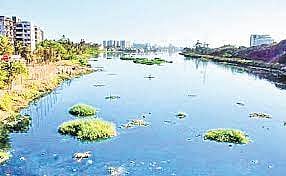
Mithi river |
Mithi River originates from the overflow of Vihar Lake (built by the British sometime around 1860 to supply drinking water to the then Bombay) inside the Sanjay Gandhi National Park (SGNP) and also receives overflow from Powai Lake. It flows for about 17.9 kms before meeting the Arabian Sea at Mahim Creek and has the largest catchment area of 7,265 hectares (ha). The upper stretch of 11.8 kms of the river falls under the jurisdiction of the BMC, whereas the remaining downstream portion is under the administrative control of the Mumbai Metropolitan Region Development Authority (MMRDA).
Mithi River forms the boundary between Mumbai’s island city and its suburbs.
Mithi's plight came to light after the July 26, 2005 deluge in Mumbai. A fact-finding committee set up by the state government blamed encroachment on Mithi and suggested its restoration. Since then, BMC and MMRDA both spent a lot of money on projects related to Mithi.
Mithi was named the most polluted river in the state in 2018, with water quality parameters much above Central Pollution Control Board (CPCB) standards. Concrete embankments along the river – an idea criticised by environmentalists – have been built along the river’s lower reaches along Bandra-Kurla Complex (BKC) as well as near its headwaters at Vihar and Powai lakes.
Over the years, the water quality of Mithi has deteriorated with slums and industrial units, which have come up on its bank, discharging sewage and industrial waste directly into it. In 2019, the water was found to have the presence of fecal coliform bacteria 15 times higher than the standard limit.
In November last year, the BMC cleared four proposals related to rejuvenation of Mithi river. The work includes laying of sewer lines along the river, managing flow of the river by widening, deepening, construction of reinforced cement concrete protection wall and service road.
Work completed so far and expenditure (Mithi)
Number of Shanties/ huts removed from river basin/flood plains in last five years: 4,388
River widening work completed: Rs 173 crore
Construction of 16.2 km construction work upto 7 feet deep: Rs 330 crores
Expenditure on the protective wall works Rs 569 crore
Total expenditure on completed works: Rs 1156.75 crore
Total expenditure incurred by MMRDA and BMC to date: Rs. 1656.75 crore
Ongoing work and cost (Mithi)
The cost of rehabilitating the remaining slums: Rs 1750 crore
Roads along the river for a distance of 6.5 km: Rs 30 crore
Cost of laying 3.5 km sewer line: Rs 30 crore
11.12 km of sewerage works: approximately Rs 97.5 crore
The total estimated cost of the proposed work: Rs 980.14 crore
Total Expenditure to date: Rs. 2136.89 crore (excluding cleaning works)
Widening, deepening, and construction of RCC wall of Mithi river and laying of sewers and Expenditure on river flow modelling: Rs 490 crore
The other three rivers
Oshiwara River: Also known as Walbhat River it starts from the Aarey Colony near SGNP, cuts through the Goregaon hills and after a journey of seven kilometers, finally empties into the Malad creek. Its total catchment area is 2,938 ha of which 53 percent is built-up with slums accounting for 23 percent share (data for 2005).
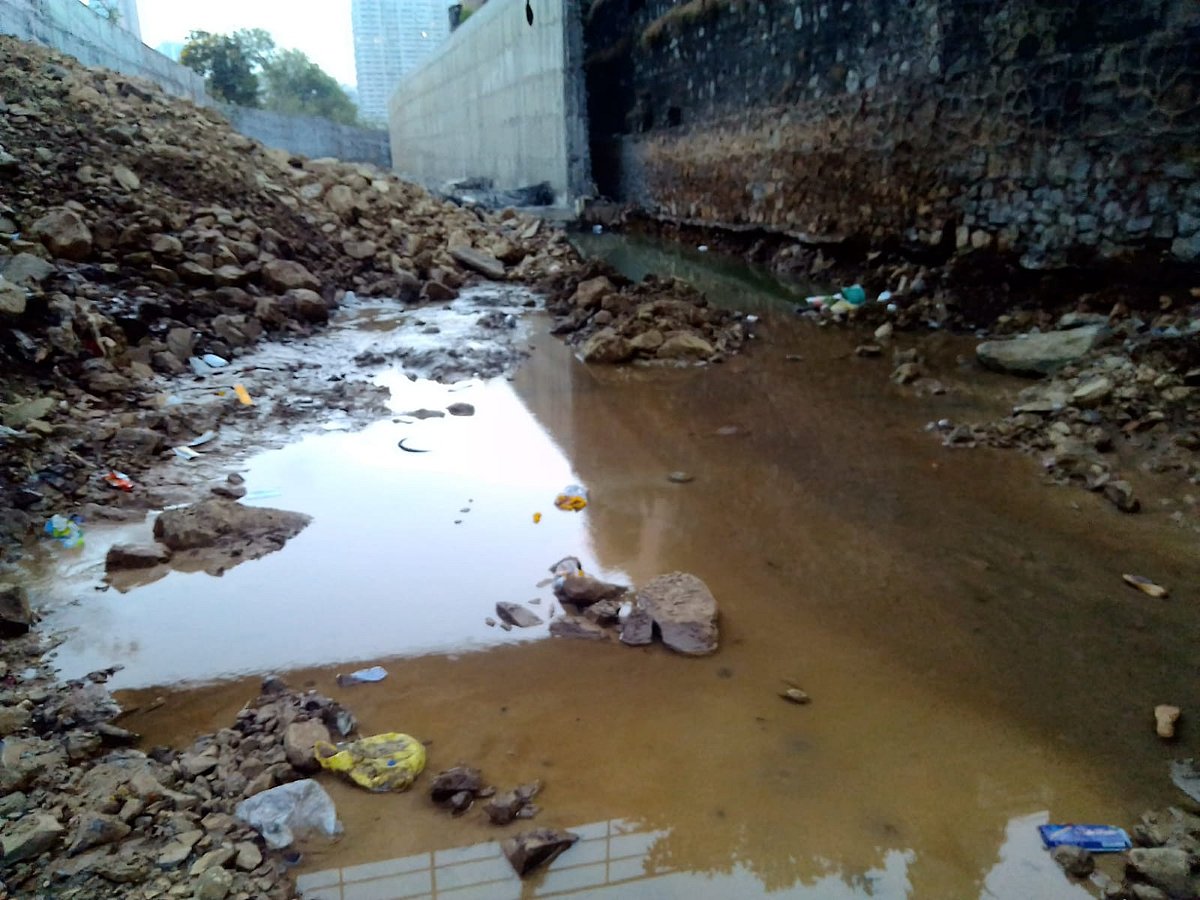
Oshiwara River |
Dahisar River: Mumbai’s third river originates from Tulsi Lake inside the SGNP and flows across the northern suburbs and meets the sea at Manori Creek after traveling for 12 kms. Dahisar River’s total catchment area is 3,488 ha, of which 24 percent is built up (data for 2005).
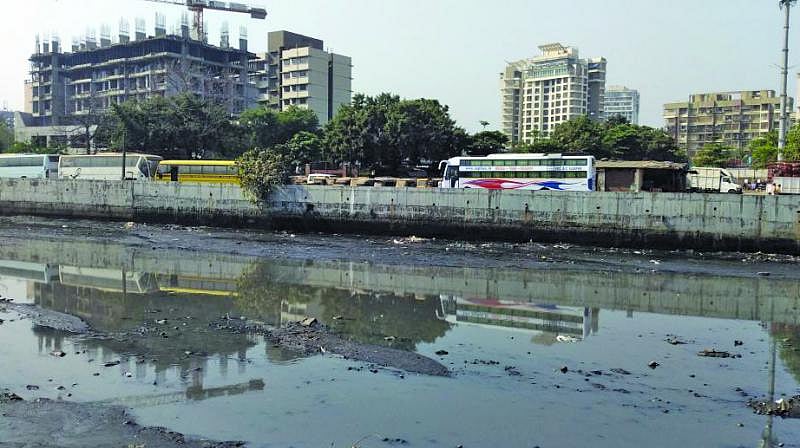
Dahisar River |
Poisar (Poinsar) River: This too starts from SGNP and flows for about seven kms to end its journey at the Marve Creek. As of 2005, almost 53 percent of its catchment was already built up. In the last 13 years since 2005, the built-up area in the catchments of these rivers must have gone up tremendously.
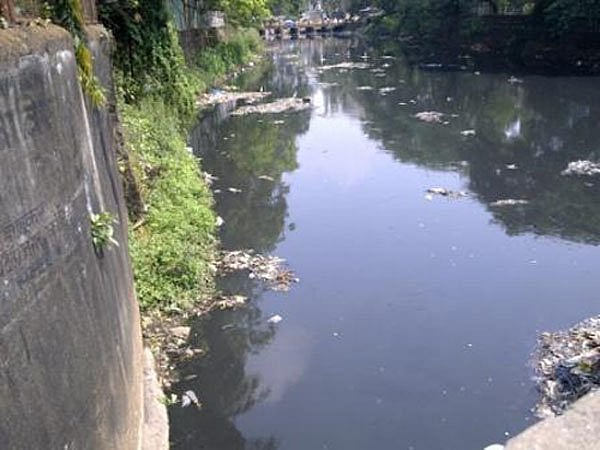
Poisar (Poinsar) River |
All these four rivers together form the natural stormwater drainage (SWD) system of Mumbai that carries excess rainwater (runoff) from various areas, emptying it all into the creeks and the Arabian Sea. This drainage network is crucial for Mumbai, as the city receives heavy annual rainfall of over 2,400 mm within the four months of June, July, August, and September. Also, large parts of Mumbai are barely above sea level (some even below sea level), thus prone to regular flooding.
For Poisar, Dahisar, and Oshiwara rivers, about 17.5kms of fresh sewer lines, 16.5kms of stormwater drains, 16 drainage interceptors, and 17 small capacity sewage treatment plants will be built over the next four years.
According to BMC the locations the civic body is looking at for installation of STPs include Sukurwadi and Indira Nagar along the Dahisar river; Kranti Nagar, Gokul Nagar. Durga Nagar, Poisar Subway, and Sanjay Nagar along the Poisar river; and near the Hindu cemetery in Aarey Colony, which is aimed at tackling a significant quantity of wastewater that is discharged from the dairy industry there.
The Mumbai civic body had received responses from ten bidders for this. The BMC has told the Supreme Court that the tender process has been delayed due to the pandemic. Tenders that were invited in April and May 2020 are yet to be awarded for works on the three rivers. “The process of appointing contractors for the river rejuvenation project is in the last stage. We have already sent our reports on the project," said Laxmivenkatesh Kamlapurkar, Chief Engineer - Stormwater drains (SWD) Department.
Meanwhile Additional Municipal Commissioner, (Projects), P Velrasu said, "Rejuvenation of rivers includes widening, improving the quality of water, curbing pollution of rivers, creating sewer networks, constructing desilting access roads, beautification of river banks and building Sewage Treatment Plants. The project involving the three rivers will cost about Rs 1,400 crore."
In the 2021-22 Budget, the civic body had announced its 'river rejuvenation project'. As part of the project, the process of river widening, curbing pollution, and desilting works is to be carried out in a phased manner.
According to officials from the Storm Water Drain (SWD) department, the project will take about 36 months to complete once contractors are appointed. “While three firms each have shown interest for Dahisar and Walbhat rivers, four companies have expressed interest in executing the Poisar river project. The process of finalizing contractors is going on,” said an official from the SWD department.
Expenditure on rivers so far
Dahisar River: over Rs 125 crore
Poisar River: nearly Rs 200 crore
Oshiwara -Walbhat river: Rs 85 crore
Future Expenditure (estimated Rs. 1400 crore)
Dahisar River: Rs. 181 crore
Poisar River: Rs. 752 crores
Oshiwara-Walbhat river: Rs. 504 crores


